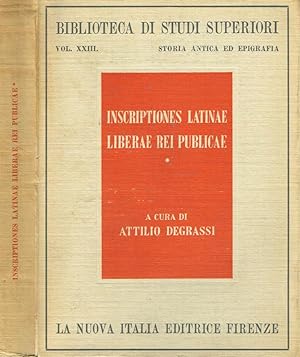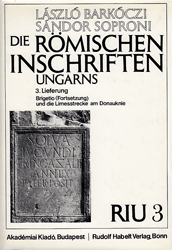Classical Philology: Epigraphy
Overview
On this page, you can discover the best resources for the study of Greek and Latin inscriptions available to UB library users.
Introductions & Guides | Corpora: Greek | Corpora: Latin | Select Corpora: General & Topical | Select Corpora: Geographical
Journals | Ancillae for Reading and Understanding Inscriptions | Online Resources
Introductions & Guides
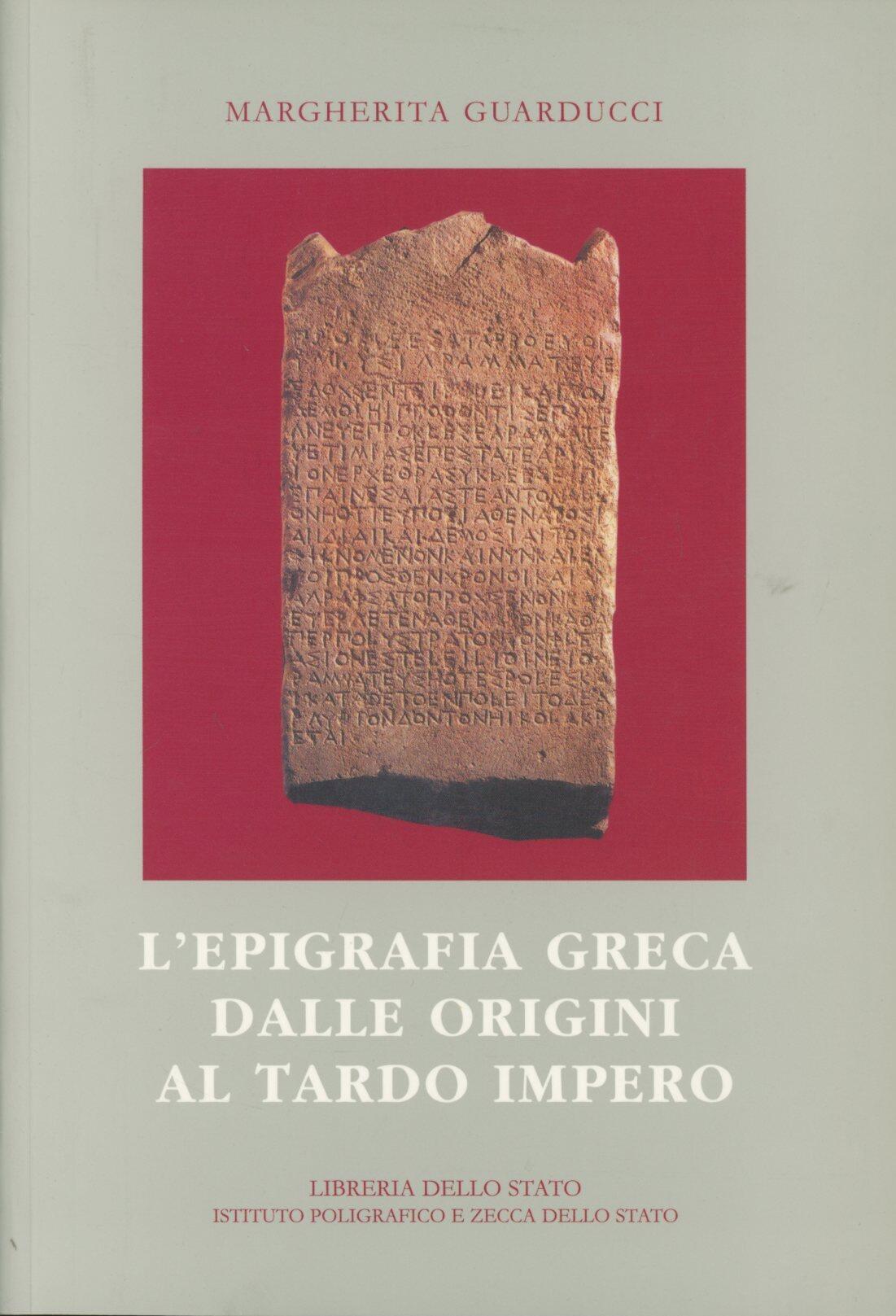
L'epigrafia greca dalle origini al tardo impero by Margherita Guarducci (2005)
This item is not currently available through UB Libraries, but interested UB users are encouraged to order it through Delivery+.
Nouveau Choix d'Inscriptions Grecques by Georges Rougemont & Denis Rousset (2005)
This item is not currently available through UB Libraries, but interested UB users are encouraged to order it through Delivery+.

Initiation à l'épigraphie grecque et latine by Bernard Rémy & François Kayser (1999)
This item is not currently available through UB Libraries, but interested UB users are encouraged to order it through Delivery+.

Dizionario epigrafico di antichità romane, 5 vols., by Ettore de Ruggiero (1961)
Lockwood: CN70 .R8 | 2nd floor Reference
Online: part of 1895 edition available at HathiTrust (UB only): Vol. 1 | Vol. 2, Pt. 1 and at the Internet Archive: Vol. 1 | Vol. 2, Pt. 1

Latin epigraphy: an introduction to the study of Latin inscriptions by J.E. Sandys (1919)
Goetz: CN510 .S63 1927
Online: 1919 edition available at HathiTrust (UB only).

Cours d'épigraphie latine, 4. éd., by René Cagnat (1914)
Lockwood: CN510 .C3 1914 | 4th floor stacks
Goetz: CN510 .C3
Online: 1914 edition available at HathiTrust (UB only); 1898 edition available at the Internet Archive.

Griechische Epigraphik, 3. Aufl., by Wilhelm Larfeld (1914)
Annex: PA25 .H25 Abt.1 T.5
Online: 1914 edition available at HathiTrust (UB only) and at the Internet Archive.
Handbuch der griechischen Epigraphik, 2 vols., by Wilhelm Larfeld (1907)
Online: 1907 edition available at HathiTrust (UB only): Vol. 1 | Vol. 2 and at the Internet Archive: Vol. 1 | Vol. 2
Corpora: Greek
-

Inscriptiones Graecae (IG)
The Inscriptiones Graecae (IG) are an academic project originally begun by the Prussian Academy of Science, and today continued by its successor organisation, the Berlin-Brandenburgische Akademie der Wissenschaften. Its aim is to collect and publish all known ancient inscriptions from the mainland and islands of Greece. The project was designed as a continuation of the Corpus Inscriptionum Graecarum (Corpus of Greek Inscriptions, abbreviated CIG) published by August Böckh between 1825 and 1860, and as a parallel to the Corpus Inscriptionum Latinarum (Corpus of Latin Inscriptions) founded by Theodor Mommsen in 1847. From 1860 to 1902, it was directed by Adolf Kirchhoff. From 1902 to 1931, Ulrich von Wilamowitz-Moellendorff was in control of the project; he reorganised and re-energised the IG, turning it into one of the most important series for the publication of source material in classical studies. After the Second World War, the project suffered from a lack of financial and motivational support. It came to a temporary halt in 1972, but was revived by the newly reformed Berlin-Brandenburg Academy in 1994. So far, 49 fascicles have been published, some of them in several editions. The preparation of individual volumes is partially entrusted to external scholars, in which case the Berlin Academy retains the final editing.
Lockwood: Oversize CN360 .I6 | Oversize CN360 .I62 | Oversize CN360 .I623 | Oversize CN380 .A8 C6 | all: 4th floor Oversize stacks
Goetz: CN 360 .I6 OVERSIZE | CN 360 .I62 OVERSIZE
Related Resources
Inscriptiones Graecae project homepage: The homepage in English for the IG project.
Searchable Greek Inscriptions: A digital library of inscriptions from the Packard Humanities Institute, including the complete IG corpus.
Corpus Inscriptionum Graecarum: The forerunner to the IG, edited by August Böckh and published 1828-1877, available in its entirety as PDFs.
Wikipedia: The Wikipedia article on the IG, from which the above description is taken, contains valuable bibliographic and historical information on the series.
HathiTrust holdings: Volumes of the IG available online through HathiTrust (UB only). N.B. This list may not be complete.
Internet Archive holdings: Volumes of the IG available online through the Internet Archive. N.B. This list may not be complete.
Corpora: Latin
-

Corpus Inscriptionum Latinarum (CIL)
The Corpus Inscriptionum Latinarum (CIL) is a comprehensive collection of ancient Latin inscriptions. It forms an authoritative source for documenting the surviving epigraphy of classical antiquity. The CIL collects all Latin inscriptions from the whole territory of the Roman Empire, ordering them geographically and systematically. The earlier volumes collected and published authoritative versions of all inscriptions known at the time—most of these had been previously published in a wide range of publications. The descriptions include images of the original inscription if available, drawings showing the letters in their original size and position, and an interpretation reconstructing abbreviations and missing words, along with discussion of issues and problems, all in Latin. The CIL presently consists of 17 volumes in about 70 parts, recording approximately 180,000 inscriptions. Thirteen supplementary volumes have plates and special indices. The first volume, in two sections, covered the oldest inscriptions, to the end of the Roman Republic; volumes II to XIV are divided geographically, according to the regions where the inscriptions were found. The other volumes cover other topics. Volume XVII, for instance, is entirely devoted to milestones. A volume XVIII is planned, which will contain the Carmina Latina Epigraphica (Latin verse inscriptions). A two-volume "Index of Numbers", correlating inscription numbers with volume numbers, was published in 2003. The Berlin-Brandenburgische Akademie der Wissenschaften continues to update and reprint the CIL in new editions and supplements.
Lockwood: CN520 .C6 | 4th floor Oversize stacks
Goetz: CN 520 .C6 (vol. 16 only)
Related Resources
Corpus Inscriptionum Latinarum project homepage: The homepage in English for the CIL project, containing valuable historical and bibliographic information.
Wikipedia: The Wikipedia article on the CIL, from which the above description is taken, contains valuable historical information on the series.
HathiTrust holdings: Volumes of the CIL available online through HathiTrust (UB only). N.B. This list may not be complete.
Internet Archive holdings: Volumes of the CIL available online through the Internet Archive. N.B. This list may not be complete.
Select Corpora: General & Topical
Sammlung der griechischen Dialekt-Inschriften, 4 vols., by F. Bechtel, A. Bezzenberger et al (1973)
Lockwood: CN350 .S2 1973 | 4th floor stacks
Online: Various editions and volumes available at HathiTrust (UB only).
Recueil des inscriptions juridiques grecques : texte, traduction, commentaire by R. Dareste, B. Haussoullier, T. Reinach (1965)
Lockwood: CN367 .J8 D2 1891 | 4th floor stacks
Lockwood has: fasc. 1-3.
Annex: CN367 .J8 D2 1965
Annex has: vol. 3.
Online: Various editions and volumes available at HathiTrust (UB only).

Inscriptiones latinae selectae, 3rd ed., 3 vols., by Hermann Dessau (1962)
Lockwood: CN521 .D3 1962 | 4th floor stacks
Goetz: CN521 .D3 1954
Online: Various volumes and editions available at HathiTrust (UB only).

Orientis graeci inscriptiones selectae, 4 vols., by Wilhelm Dittenberger (1960)
Goetz: CN360.S9
Online: Various editions and volumes available at HathiTrust (UB only).

Inscriptiones graecae ad res romanas pertinentes, 4 vols., by René Cagnat et al (1906)
Lockwood: DG13 .I57 1906 | 4th floor stacks
Lockwood has: vol. 3 only.
Goetz: CN360.I7
Online: Various editions and volumes available at HathiTrust (UB only).
Select Corpora: Geographical
Catalogue of the Greek Inscriptions in the Sudan National Museum by Adam Lajtar (2003)
This item is not currently available through UB Libraries, but interested UB users are encouraged to order it through Delivery+.

Inscriptiones Italiae, various editors (1931)
Lockwood: Oversize CN1010 .I6 | 4th floor Oversize stacks
Check link for Lockwood holdings.

The collection of ancient Greek inscriptions in the British Museum, 4 vols., by C.T. Newton, E.L. Hicks, & Gustav Hirschfeld (1874)
Lockwood: Oversize CN350 .B8 | 4th floor Oversize stacks
Lockwood has: vols. 2-4.
Online: 1874 edition available at HathiTrust (UB only): Vol. 1 | Vol. 2 | Vol. 3
Journals

L'Année épigraphique
Online: See holdings here.
Lockwood: CN1 .A55
Lockwood has: 1888-1988, 1999-2014 in print.
AnnEpigr website
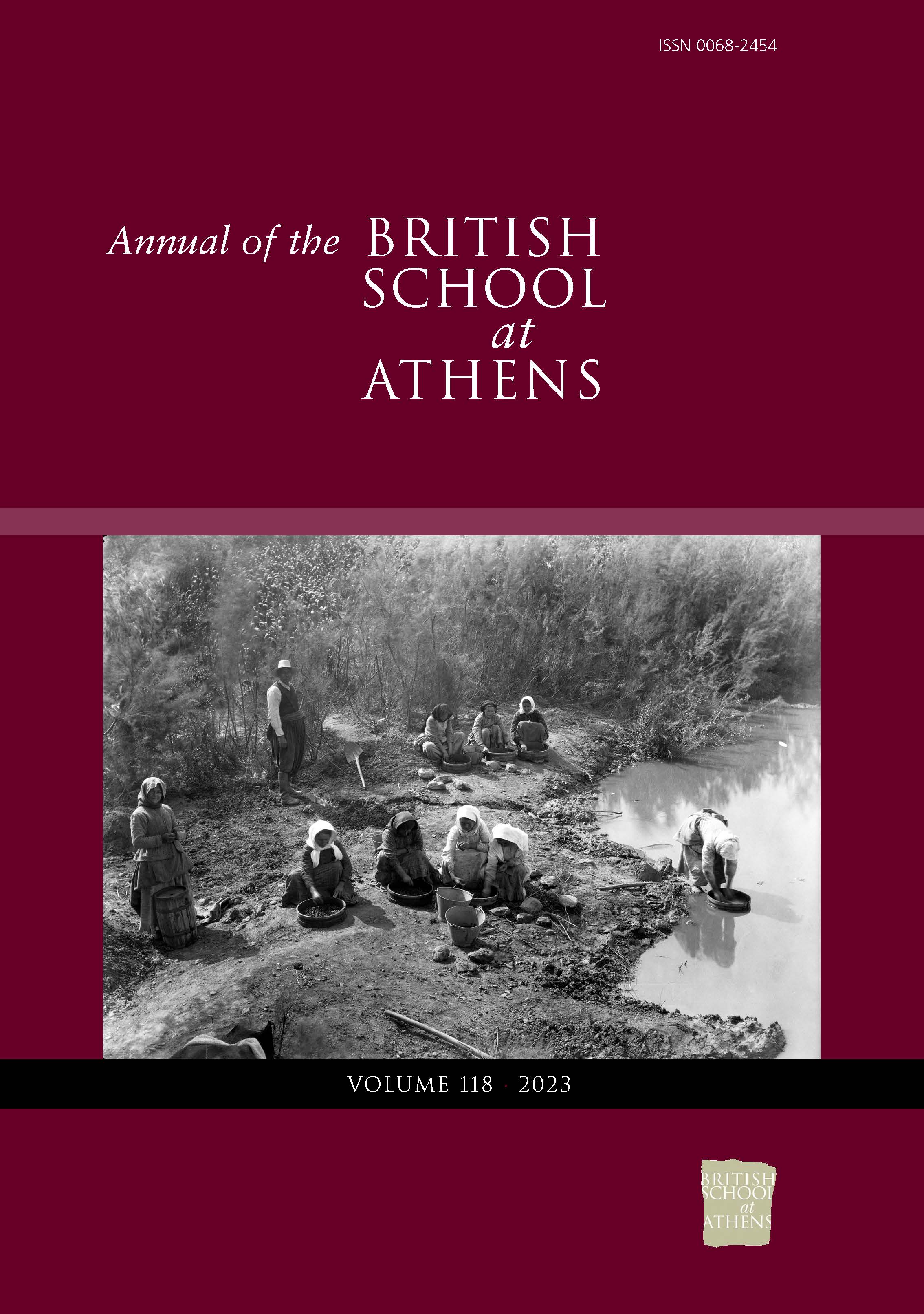
Annual of the British School at Athens
Online: See holdings here.
Lockwood: DF11 .B6 | 4th floor stacks
Lockwood has: no. 1 (1894/5) - no. 44 (1949); no. 46 (1951) - no. 112 (2017) in print.
ABSA website

Bulletin de correspondance hellénique
Online: See holdings here.
Lockwood: Per DF10 .B9 | 3rd floor Current Periodicals
Lockwood has two most recent issues in print.
Annex: Per DF10 .B9
Annex has: vol. 1 (1877) - vol. 13 (1889); vol. 20 (1896) - vol. 21 (1897); vol. 27 (1903) - vol. 28 (1904); vol. 31 (1907) - vol. 138 (2014) in print.

Hesperia: The Journal of the American School of Classical Studies at Athens
Online: See holdings here.
Annex: Per DF10 .H4
Annex has: vol. 1 (1932) - vol. 79 (2010) in print.
Hesperia website

Supplementum epigraphicum Graecum
Lockwood: CN360 .S87
Lockwood has: vol. 1 - vol. 58 (2008); vol. 63 (2013) in print.
SEG website
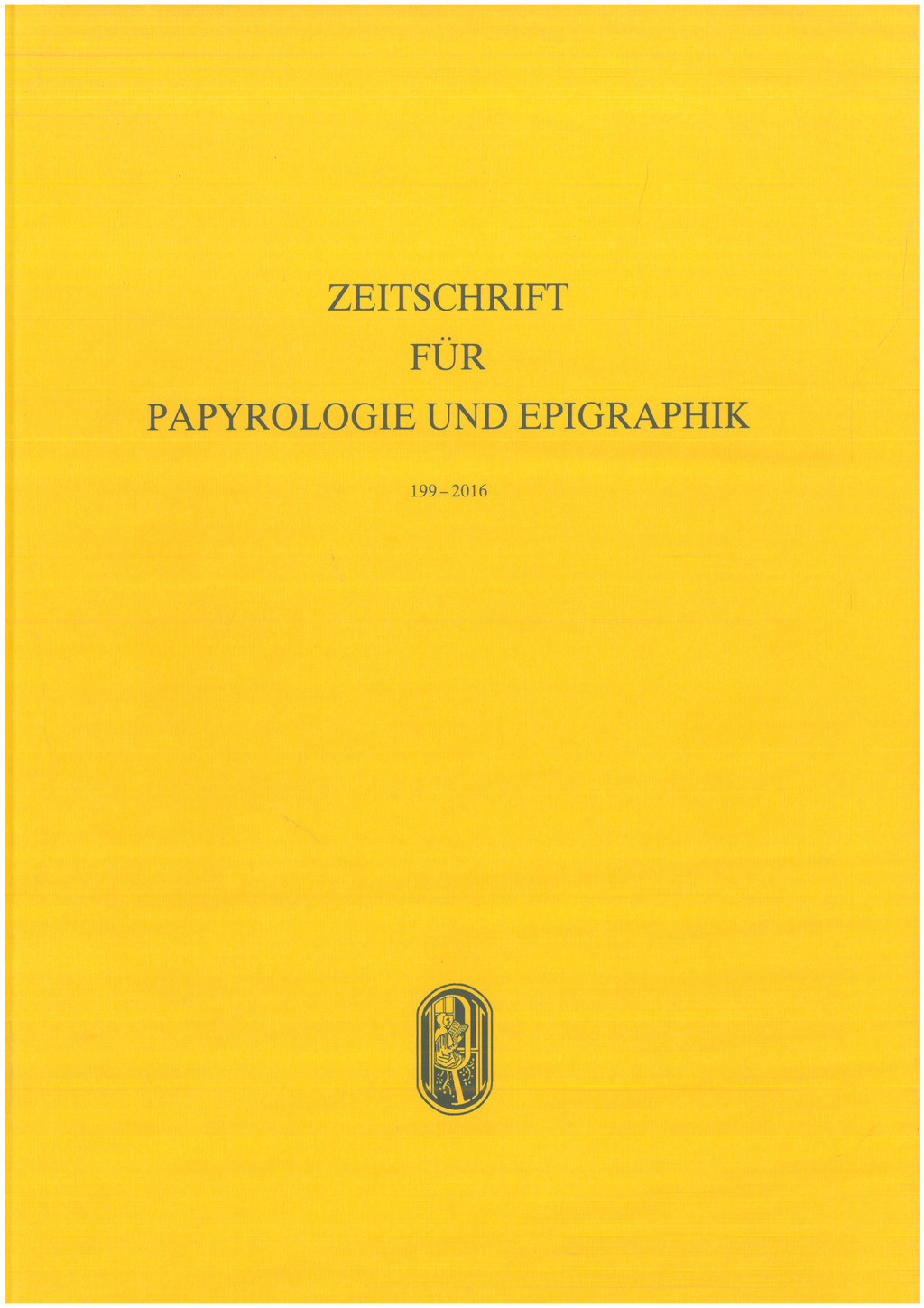
Zeitschrift für Papyrologie und Epigraphik
Online: See holdings here.
Annex: Per PA3339 .Z45
Annex has: Bd. 1 (1967) - Bd. 196 (2015) in print.
ZPE website
Ancillae for Reading and Understanding Inscriptions

Dizionario epigrafico di antichità romane, 5 vols., by Ettore de Ruggiero (1961)
Lockwood: CN70 .R8 | 2nd floor Reference
Online: part of 1895 edition available at HathiTrust (UB only): Vol. 1 | Vol. 2, Pt. 1 and at the Internet Archive: Vol. 1 | Vol. 2, Pt. 1

Latin epigraphy: an introduction to the study of Latin inscriptions by J.E. Sandys (1919)
Online: 1919 edition available at HathiTrust (UB only).

Cours d'épigraphie latine, 4. éd., by René Cagnat (1914)
Lockwood: CN510 .C3 1914 | 4th floor stacks
Online: 1914 edition available at HathiTrust (UB only); 1898 edition available at the Internet Archive.
Online Resources
-
Centre for the Study of Ancient Documents at Oxford UniversityThe Centre for the Study of Ancient Documents was established in 1995 under the auspices of Oxford University's Faculty of Literae Humaniores to provide a focus for the study of ancient documents within Oxford. Over the last six years it has developed into a research centre of national and international importance. The Centre provides a home for Oxford University's epigraphical archive, which includes one of the largest collections of squeezes (paper impressions) of Greek inscriptions in the world, together with the Haverfield archive of Roman inscriptions from Britain, and a substantial photographic collection. The strengths of the epigraphical archive lie in its broad coverage of early Greek inscriptions, Attic epigraphy and the Hellenistic world. Individual sites well represented in the archive include Chios, Samos, Priene, Rhodes, and Samothrace. The material in the archive is currently being reorganised and catalogued.
-
EAGLE: Electronic Archive of Greek and Latin Epigraphy EAGLE (Electronic Archive of Greek and Latin Epigraphy) rappresenta il punto di arrivo dei lavori per la creazione di una banca dati generale dell'epigrafia antica avviati nel 1997 dall'Association Internationale d'Épigraphie Grecque et Latine (AIEGL) con la costituzione di una Commissione ad hoc. La delibera di cercar di pervenire al risultato di un archivio generale virtuale dell'epigrafia greca e latina del mondo antico, non creando una banca unica (come si era in origine pensato), ma attraverso una federazione di più banche sotto un unico portale, denominata EAGLE, è stata presa, con altre, dalla Commissione, tenendo conto dell'esperienza maturata nel frattempo, nel corso di una riunione conclusiva della stessa tenutasi ad Aquileia ed a Trieste nei giorni 14-16 novembre 2003. EAGLE si propone la registrazione di tutte le iscrizioni greche e latine anteriori al VII sec. d.C. secondo la miglior edizione esistente (eventualmente con ulteriori controlli ed emendamenti) corredate da alcuni altri dati fondamentali e, ove possibile, da una loro immagine. In prima istanza, le banche federate sono state le seguenti tre: Epigraphische Datenbank Heidelberg (EDH), Epigraphic Database Roma (EDR), Epigraphic Database Bari (EDB).
-
Epigraphic Database Bari The Epigraphic Database Bari project (EDB), started in 1988, specializes in the epigraphic documents by Christians of Rome between III-rd and VIII-th cent. CE in the framework of the Electronic Archive of Greek and Latin Epigraphy (EAGLE), to whom it participates as founding-member - with EDH and EDR - since 2004. Most of these epigraphic documents were published in the Inscriptiones Christianae Vrbis Romae, nova series, voll. I-X, Pontificio Istituto di Archeologia Cristiana, in civitate Vaticana 1922-1992 (ICVR). EDB plains to update ICVR and to collect also the other Christian inscriptions from Rome and its suburbium published elsewhere. The total amount of Christian inscriptions from Late Ancient Rome is estimated to be around 40,000, although this number is increasing continually. Currently, EDB has 40845 items (online: 40635; awaiting approval: 210) and 7494 images. Every epigraphic document is accompanied by data about bibliographical informations, contexts, material, graphical and linguistic elements. The transcription of texts is obviously offered as well, and the entire document is accompanied by its estimated date of production (if possible) and short comments, when necessary. Based an agreement established between the EDB and the Papal Commission of Sacred Archeology (PCAS), a dynamic link to the Archive of the PCAS allows the visualization of pictures - if existing - of the documents.
-
Epigraphic Database for Ancient Asia Minor (in English) The EDAK (Epigraphische Datenbank zum antiken Kleinasien) project of the Department for Ancient History at the University of Hamburg aims to collect the widespread published Greek and Latin inscriptions of the regions of modern Turkey and to present them in a database with a short description and a commentary. Currently the database contains more than 6000 inscriptions of ancient Lydia, Galatia, Paphlagonia, Phrygia and Proseilemmene. The work for adding further regions is in progress.
-
Epigraphic Database Heidelberg (in English) The Epigraphic Database Heidelberg contains the texts of Latin and bilingual (i.e. Latin-Greek) inscriptions of the Roman Empire. The epigraphic monuments are collected and kept up to date on the basis of modern research. With the help of search functions specific queries can be carried out - e.g. a search for words in inscriptions and / or particular descriptive data. The search results are often displayed together with photos and drawings. The geographic focus is provided by the provinces of the Roman Empire. The total number of records rises continuously. The Research Project is made up of four constituent databases: the Epigraphic Text Database, the Photographic Database, the Bibliographic Database, and the Geographic Database.
-
Epigraphic Database Roma (in English) The Epigraphic Database Rome (EDR) is part of the international federation of Epigraphic Databases called Electronic Archive of Greek and Latin Epigraphy (EAGLE). As part of the federation, it is possible to look through EDR both as a single database or together with its partner databases accessing EAGLE’s portal. In addition to EDR, the federation currently includes the Epigraphische Datenbank Heidelberg (EDH), the Epigraphic Database Bari (EDB) and Hispania Epigraphica (HE). Further to the deliberations approved in Rome in 1999 by the Commission "Épigraphie et Informatique" of the Association Internationale d’Épigraphie Grecque et Latine (AIEGL), EDR was launched as an experimental project aimed at creating a unified database for ancient epigraphy. In 2003 EDR became an independent structure following up AIEGL’s decision to gather under the same portal a number of single databases, all having common features, instead of creating just one extensive base. This resolution marked the birth of EDR as an independent databank.
-
Epigraphik-Datenbank Clauss-Slaby Sie finden hier eine Datenbank, in der weitgehend alle lateinischen Inschriften erfasst sind. Die Texte sind aufgelöst und ergänzt. Die Präsentation der Texte ist so einfach wie möglich gestaltet. Neben den allgemein üblichen Angaben von Auflösungen, Ergänzungen und Tilgungen sind die verwendeten Sonderzeichen auf ein Minimum beschränkt. Die Abkürzungen geben die verwendeten Publikationen an.
-
Trismegistos An interdisciplinary portal of papyrological and epigraphical resources formerly Egypt and the Nile valley (800 BC-AD 800), now expanding to the Ancient World in general.
-
U.S. Epigraphy Project The goal of the U.S. Epigraphy Project (USEP) is to collect and share information about ancient Greek and Latin inscriptions preserved in the United States of America. The Project currently provides access to a database of some 750 Greek and 1,700 Latin inscriptions in the USA through browsing by collection and publication and by searching various categories of metadata (language, date, origin, type, material) and bibliographic information. A growing digital corpus of the collection registers some 400 EpiDoc editions of Latin texts and provides some 1,000 images of the inscriptions registered by the Project, each of which is identified by a unique USEP number based upon its location.













